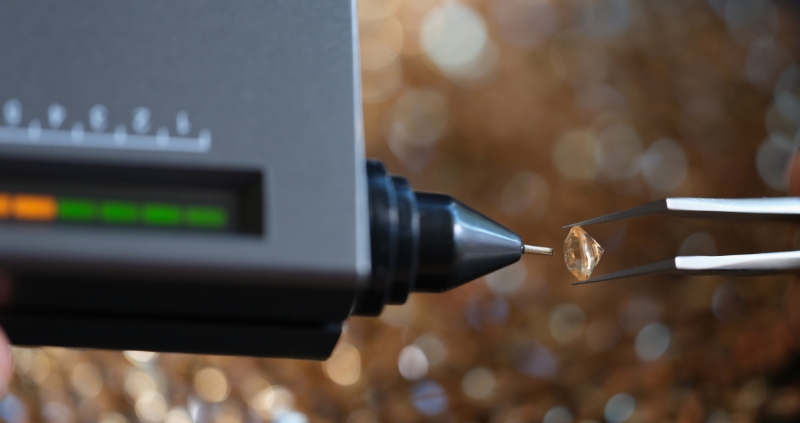How diamond testers can detect fake diamonds?
Diamond testers are portable electronic devices used to determine whether a gemstone is a real diamond or a simulant. Let's check how these diamond testers work!

Diamond testers are portable electronic devices used to determine whether a gemstone is a real diamond or a simulant, such as cubic zirconia or moissanite. These testers work based on the principle that diamonds have unique thermal and electrical conductivity properties compared to other gemstones. By measuring these properties, diamond testers can provide a quick and reliable indication of a diamond's authenticity.
Thermal Conductivity Diamond Testers
These testers compare the rate at which a material conducts heat to that of a verified diamond, known as the reference stone. Diamond is an excellent heat conductor due to its crystal structure, which allows heat to travel quickly through the stone. Other stones have lower heat conductivity, and this tester can differentiate between them by comparing their heat conductivity with that of the reference diamond.
Advantages: speed, simplicity, and relatively low cost.
Limitations: accuracy is limited to larger diamonds, as smaller ones may be indistinguishable from other stones with similar thermal conductivity properties.
Electrical Conductivity Diamond Testers
These testers work by passing a low voltage current through the diamond. The testing device measures the electrical resistance of the stone, giving immediate feedback on whether it is a genuine diamond or a fake.
Advantages: quick and easy to use, with accurate results immediately available.
Disadvantage: may not be as reliable on coloured stones due to the possibility of impurities within the stone.
Ultraviolet Light Diamond Testing
This non-destructive testing method identifies whether a diamond is natural or synthetic. Under shortwave ultraviolet light, diamonds display a unique fluorescence. Natural diamonds fluoresce blue, green, or yellow, depending on their level of purity. This method can’t usually distinguish between natural diamonds and treated diamonds, which may lead to false positives in testing.
Diamond Scope Testing
This method involves using a microscope to observe a diamond's internal structure, including its inclusions and flaws. Different types of inclusions and flaws have unique characteristics that can help determine a diamond's authenticity.
Advantages: can identify treated or enhanced diamonds, which other testers may miss.
Limitations: requires skilled professionals to interpret the results, and the cost can be prohibitive for smaller diamond businesses.
Limitations and Considerations
Size and shape of the gemstone: Diamond testers work best on gemstones that are at least 0.02 carats in size and have a flat, polished surface.
Metal settings and coatings: Testers may produce inaccurate results if the diamond is set in a metal setting or has a metal coating. It is best to test loose diamonds whenever possible.
Testing multiple stones: Clean the tester's tip between tests to avoid cross-contamination. Some testers may also have a warm-up time or require calibration before use, so follow the manufacturer's instructions.

